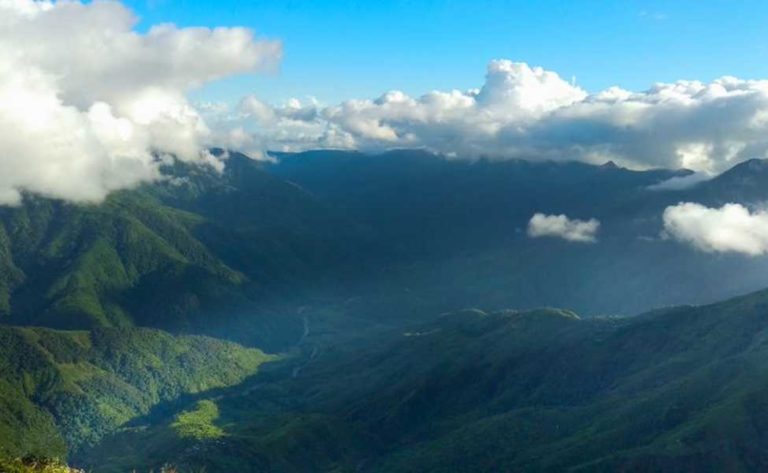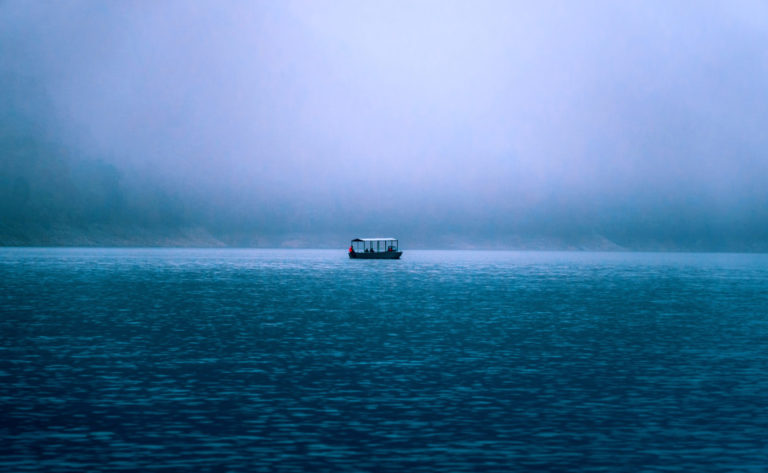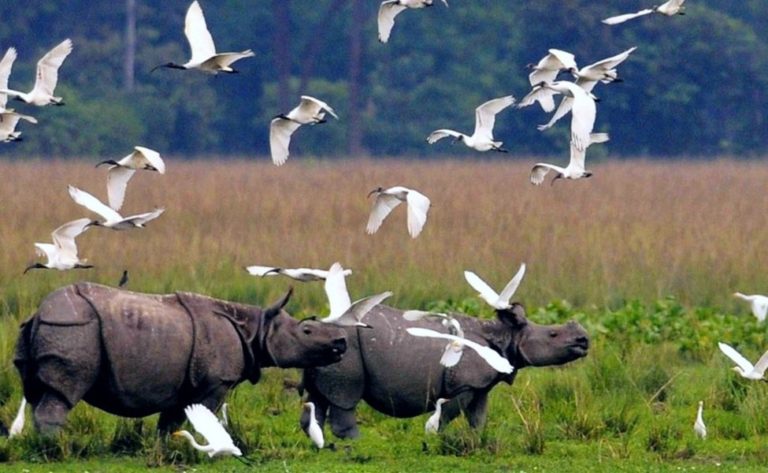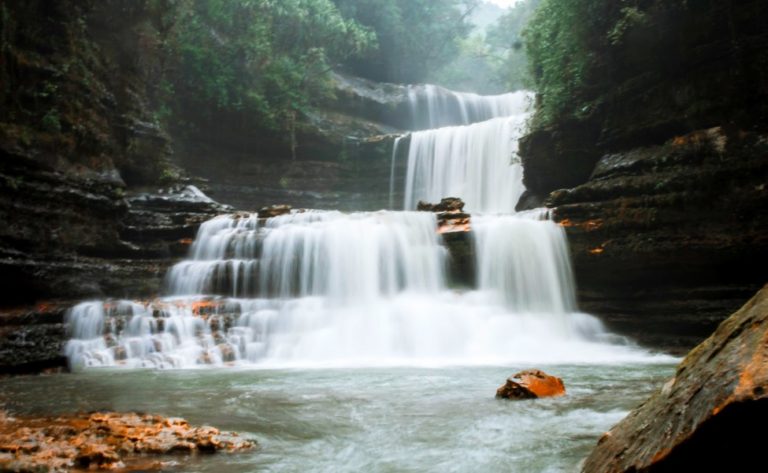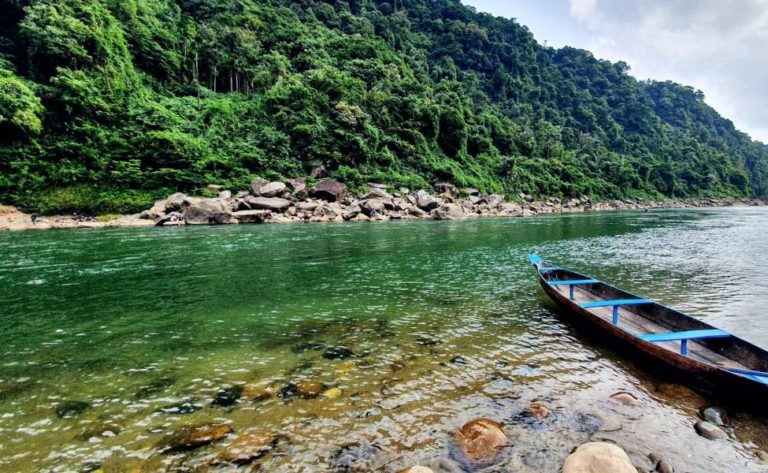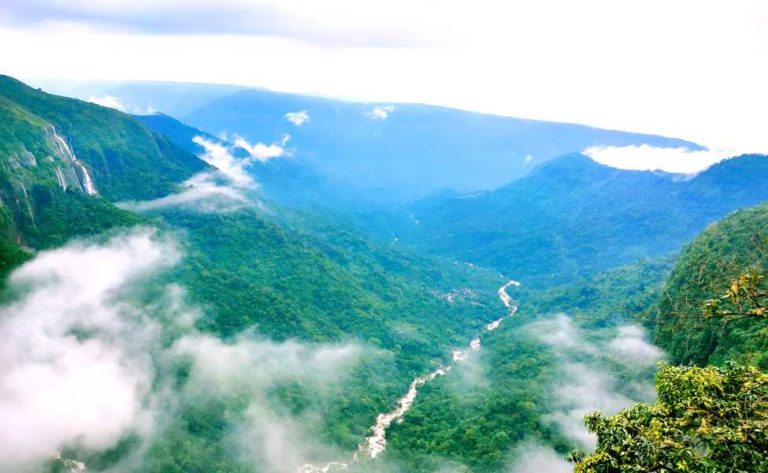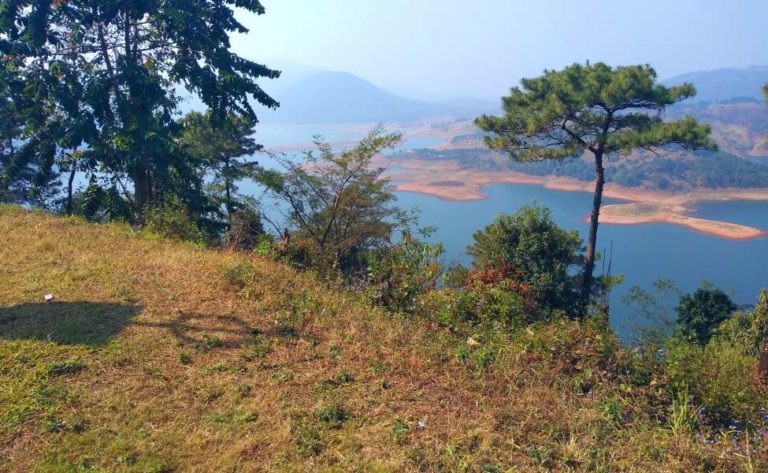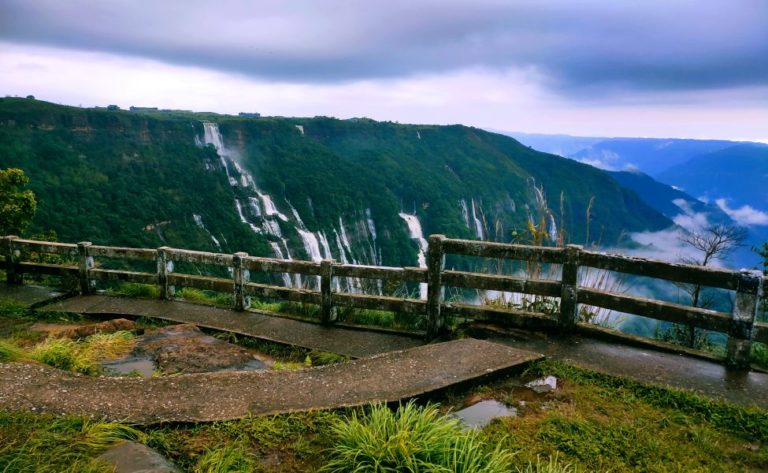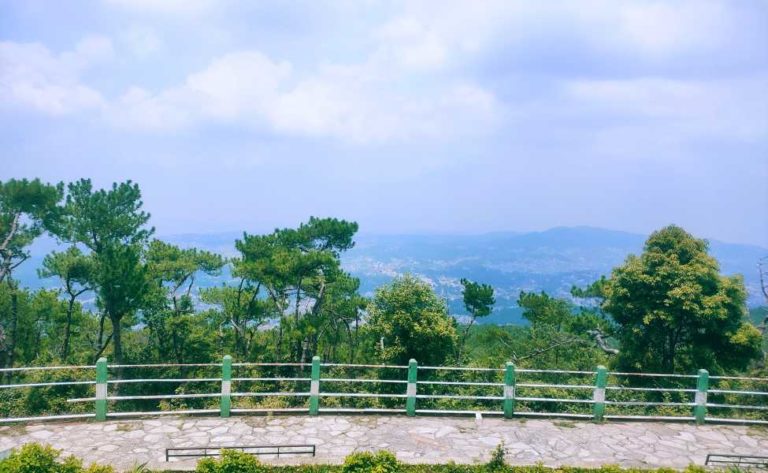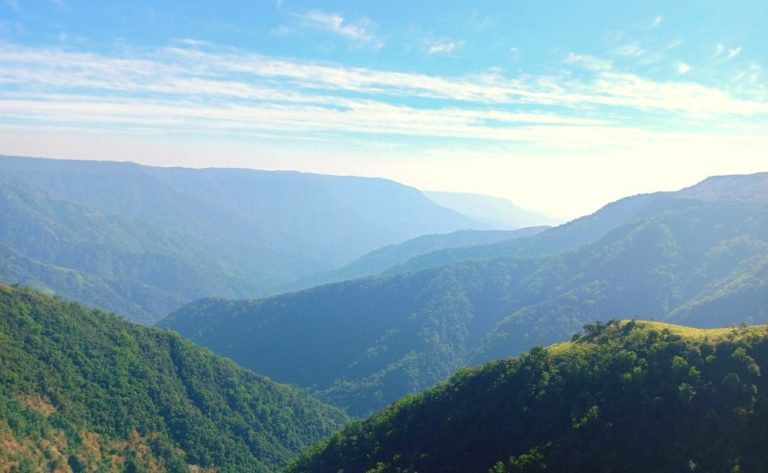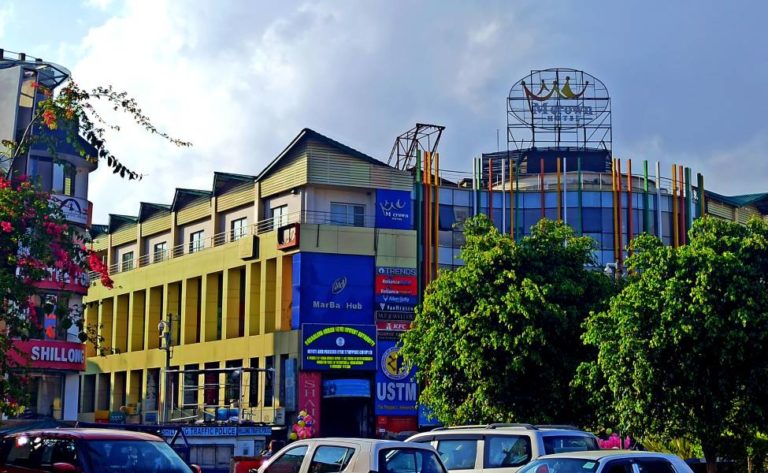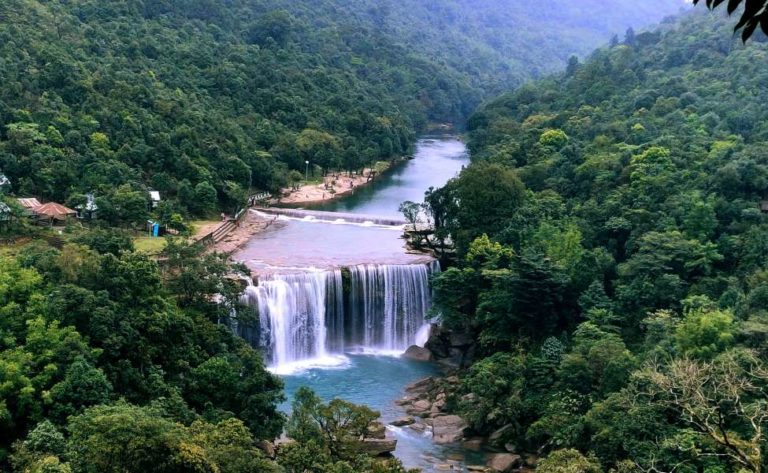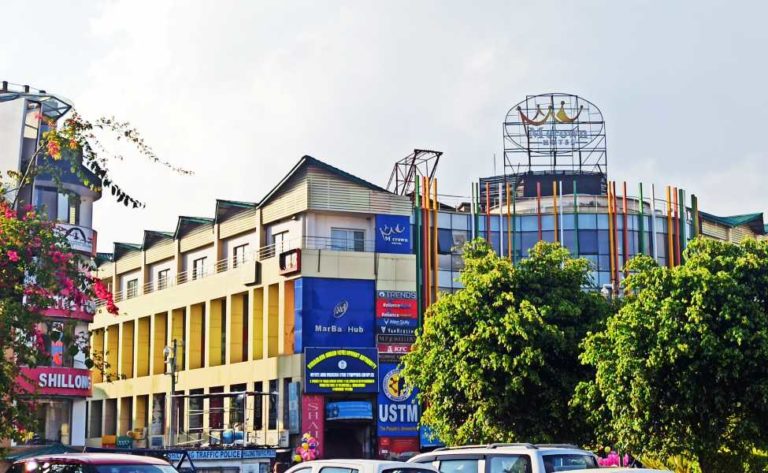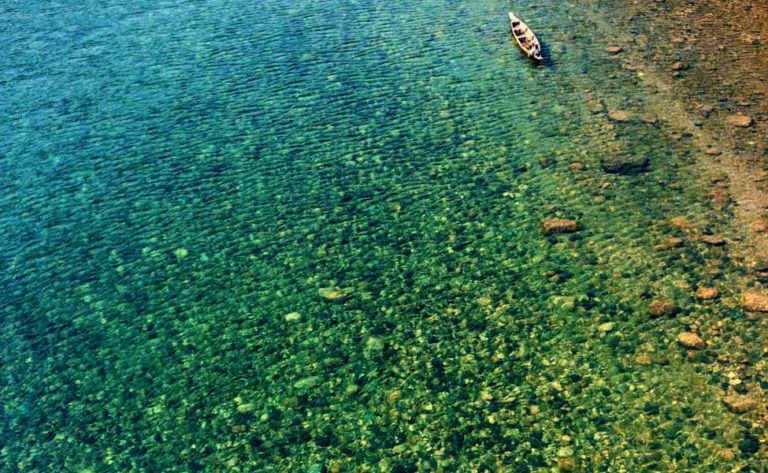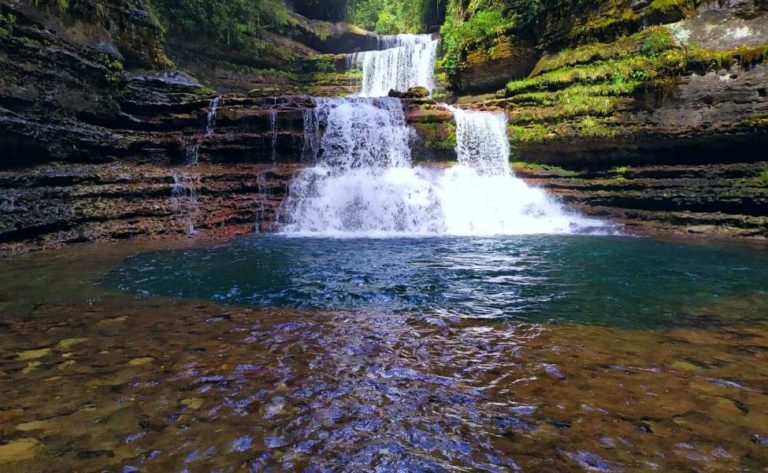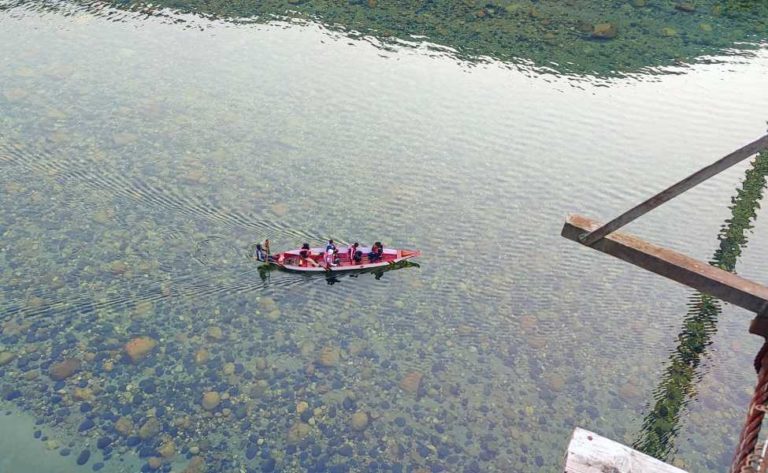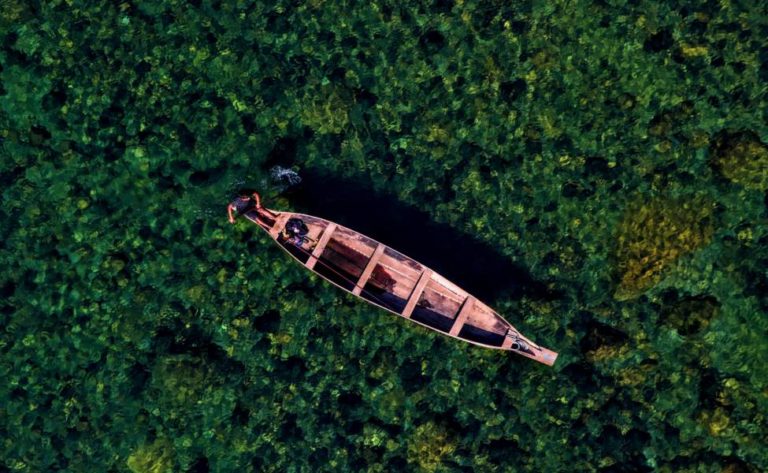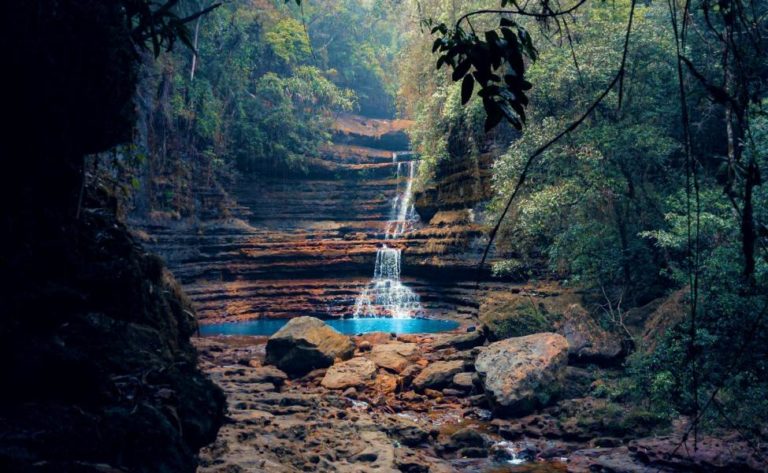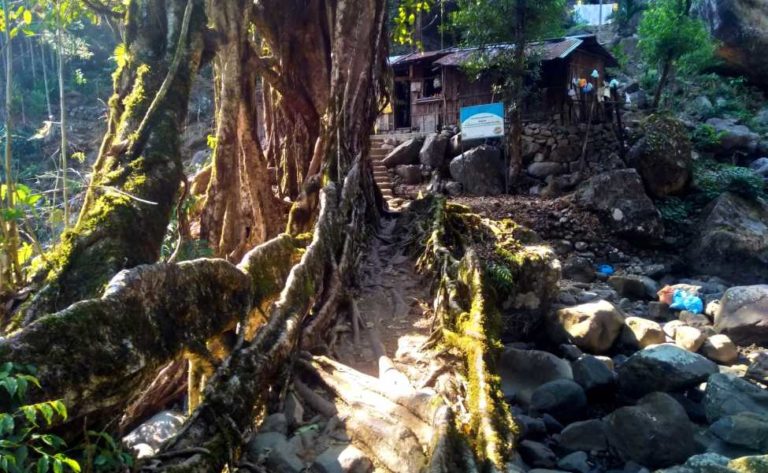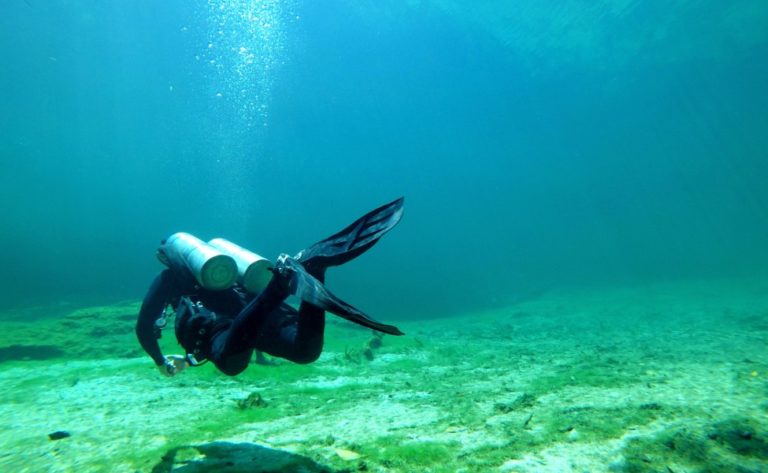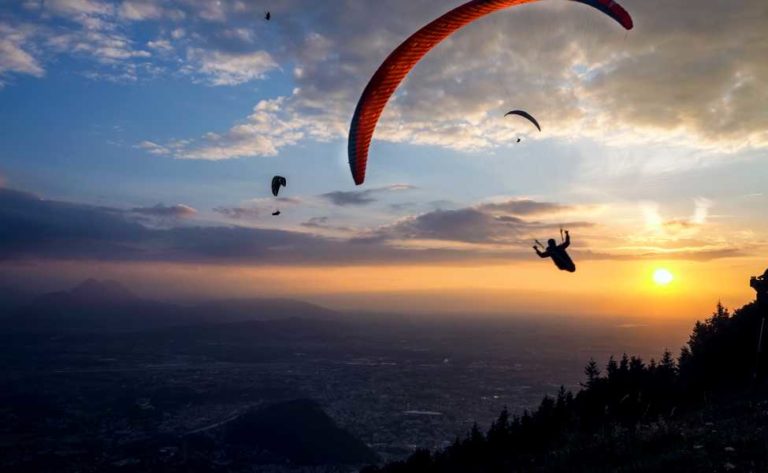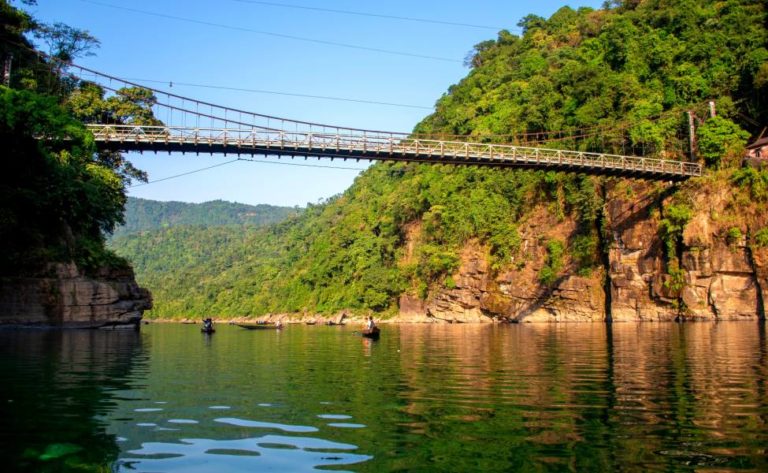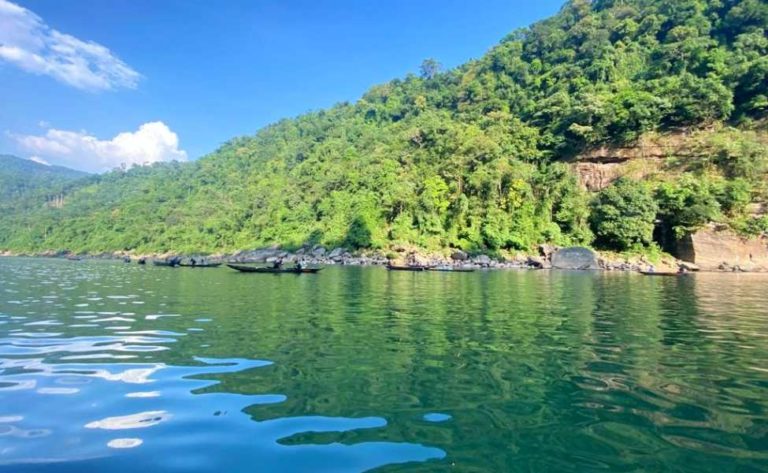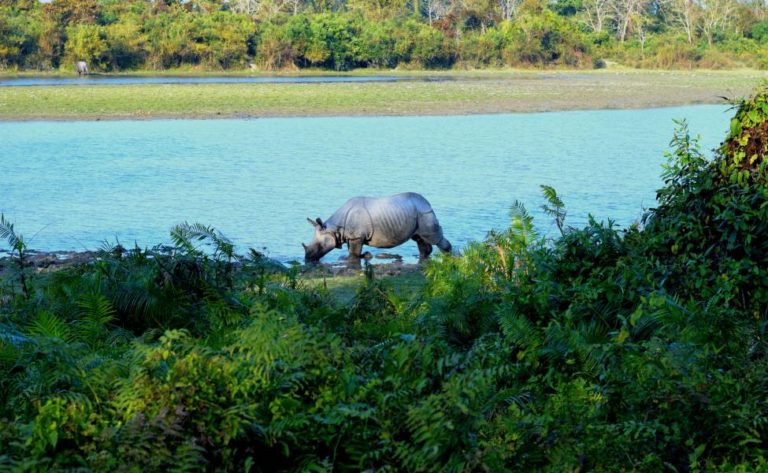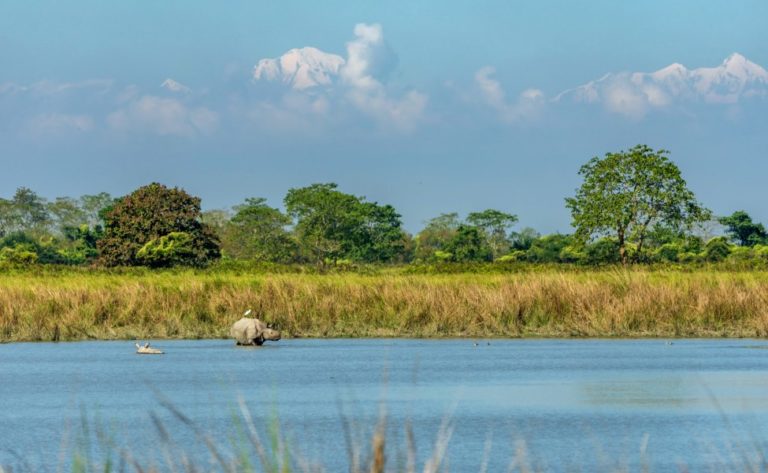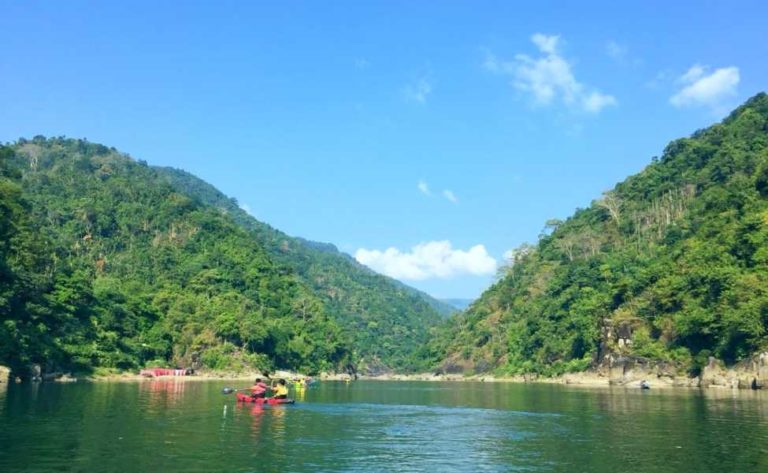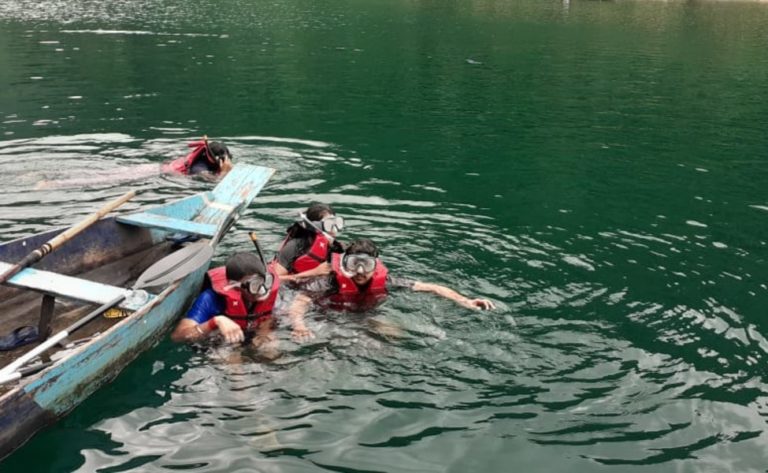
Places to visit in Majuli
Places to visit in Majuli
Majuli is a picturesque river island on the mighty River Brahmaputra that is pollution free and lushly greenMajuli is a strong contender to be included in the Unesco as A world heritage Sites list.Witnessing Raas, Majuli’s principal festival is an unforgettable experience. Majuli is an area where culture has been essential in bringing together the many ethnic groups in the area since the fourteenth century via the transmission of Neo-philosophical Vaishnavism and ancient practices.The biggest river island in the world has shrunk less than 1/2 its initial size as a result of ongoing erosion and flooding.According to a study, this island will be completely buried by 2030 owing to massive silt discharge. Majuli Island is best visited from October to December. Since the 16th century, the island has been considered the “cultural center of Assam” due to its flourishing cultural environment. The three-day Raas Leela festival takes place in the middle of November. One can appropriately arrange a trip and participate in the pomp and show. Everyone here will greet you with a warm smile. While you’re there, spend the day doing things around the village. Participate in the fabrication of handmade objects such as pottery or tribal masks to take home as gifts.
Travel Guides
Places to visit in Majuli
Kamalabari Satra
The Brahmaputra River and its tributaries were mostly responsible for its formation. This island has traditionally been the epicenter of Assamese Neo-Vaishnavite culture. Bedulapadma Ata’s Kamalabari is one such well-known Satra in Majuli.This satra has produced several noteworthy figures in the state’s cultural sector. Many well-known artists from this Satra, like Muktiyar Bayan and the late Along with the statues of legendary characters, this region is also recognized for producing many gorgeous boats. Many young men in this area have made it their life’s work to adore Lord Krishna. It will surely be an incredible opportunity for you to chat with them and learn more about their lives. The Kamalabari Satra in Majuli is a convenient location. One may take a ferry from the port of Nimatighat, which is near Jorhat, to reach here.
Dakhinapat Satra
The Dakhinpat Satra has a tremendous amount of popularity on Majuli Island in Assam state. Founded in 1584 by Vamshigopal, a devotee of Sri Vanamali Dev, this Satra was first established.This area provides a clear peek into the dominant art and culture of Majuli. When a large event is scheduled here during the Raslila festival, this satra is fascinating to observe. This festival, which draws a significant crowd of believers, is one of the requirements for Assam’s national holidays. This data is not just a place of prayer but also has historical value for the neighborhood. From the Kamlabari Satra to the Dakhinpat Satra, we need one hour by bus. In addition, boats that leave from the Nimati Ghat transport tourists to this Satra.
Garmur
This regal and antique satra has a very sombre aura.Two Garmurs formerly existed, but they finally united into one. In this Vaishnavite temple in Majuli, several antique items and artifacts are stored, which enables visitors to learn more about the spiritual traditions of the inhabitants. The Garamur Satra hosts a variety of cultural events, including the Raslila festival. In violation of the rules of the other satras, both men and women participate in this enormous event. The Satra is the location of several rare heirlooms, for reference utensils made up of silver and gold, elephant saddle, Umber sculptures, and several antiquated literary manuscripts. Majuli has good access to both rivers and highways. The Garmur Satra is accessible to tourists by boat, as well as by bus or taxi. The months of October through February are ideal for visiting this place. In the satra, devotees gather in a public oratory to invoke All-goodness.
Auniati Satra
This well-known satra has twelve branches spread out over the state, with North Guwahati serving as the primary branch. It is said that this satra is where the Assamese Satriaya and Vaishnavite civilizations first emerged. The god Govinda, commonly known as Lord Krishna, is the focus of worship in this Satra. This god’s original home was Jagannath Puri, where it was constructed. During your stay, you could participate in the religious performances done here to honor Lord Krishna. The morning and evening hours are dedicated to the main prayers for this Satra. The Paalnaam and Apsara dance styles, which originated in the Auniati Satra, are particularly well-known. In addition to many dance styles, you may see several theatre presentations based on our epic tales here. This satra also has a sizable collection of antique cookware, handicrafts, and jewelry that represent Assamese heritage from the past. Majuli and Jorhat are separated by about 20 kilometers, and ferries often run to convey visitors there.
Tengapania
The Tengapania area of Majuli’s Brahmaputra River beachfront is a lovely location.This location boasts a golden temple structure with Ahom-inspired architecture. It’s captivating to examine the beautiful pillars and statues at this temple. Along with viewing the several satras in Majuli, tourists may relax and have fun at this charming picnic spotYou may easily reach this place from the Simaluguri junction, which is the nearest train station to Tengapania. To unwind, people come here. The majestic Brahmaputra River runs alongside it.
Chetia Gaon
Chetia Gaon is a hamlet in India’s Assam state’s Golaghat district’s Golaghat subdivision. According to 2009 census data, the gram panchayat for the hamlet of Chetia Gaon is known as Uttar Dakhin Hengra. A naturalist’s paradise, with all of the flora and animals that may be found along the river. The settlement has an area of 194.45 hectares. Chetia Gaon has a population of 720 people, 363 of whom are males and 357 of them are women. There are around 146 houses in Chetia Gaon. The Chetia Gaon hamlet has the zip code 786184. Hiking in the nearby forests and along the river’s bank are popular activities for tourists visiting Chetia Gaon. Close b are popular tourist spots such as Gogamukh Bordoloni, Dhapaliagaon, and Dhakuakhana. Taste some of the local food, which is one of the area’s attractions.
BangalPukhari
A renowned water tank by the name of Bangalpukhari may be found in the southern part of Jorhat City, next to the Na-Ali. Badan Barphukan, who terrorized Assamese society as a whole, captured Burmese officers. People in the neighbourhood avoid staring at the water of the tank because they think it will bring them misfortune as it was constructed with money acquired from murdering someone. This location is adjacent to Na-Ali, and Jorhat Airport can be reached by car in 15 to 20 minutes, is the closest airport. Near Na Ali, there are a number of bus stops. Bangalpukhari is open to visitors free of charge.
Bengenaati Satra
Another important area in the region is the Sri Sri Bengenaati Satra, located close to Majuli Island’s edge close to the Brahmaputra River. The Sri Sri Bengenaati Satra is thought to have been established on Majuli Island, around 1653. Thus, the name alludes to the Satra, which was built on an elevation piece of ground where brinjal was grown. The Bengenaati Satra, which is located on Majuli Island close to the Brahmaputra River’s banks, is susceptible to the fury of the mighty River; the Satra’s site has been shifted multiple times owing to floods and erosion; the area is consistently in danger due Brahmaputra’s ongoing bank erosion. At the Sri Sri Bengenaati Satra in Majuli Island, the Holi celebration, also known as Falgutsav, is lavishly held over four days. In order to assure the Bengenaati Satra’s prosperity, Rudra Singha, the king of Ahom, provided it with land, money, and servants.
Samaguri Satra
Majuli Island’s Samaguri Satra was founded in 1663 on the fourteenth day of the magnificent Phalgum month, which was a lunar fortnight. The Satra was given the name Samaguri Satra because it was situated next to a Sam tree that King Chakradwaj Singha planted with assistance from Chakrapani Ata. For these Satras, there is a Purush Samhati. In order to foster a stronger bond between followers and the epic narratives, the Bhaonas told their followers a variety of stories from the Hindu Epics as well as about the life of Lord Krishna. The great Saint reformer had understood that the people would relate to the Epics more if they were delivered to them in the style of a theatre with many artists acting out the tales. Tourists from all around the world visit the Samaguri Satra on Majuli Island to learn more about this unique mask-making skill that dates back thousands of yearsAll are free to participate in and practice their religion in Assamese satras, regardless of caste, creed, or social ties.Srimanta Shankardeva established satras, which swiftly became well-liked as locations where people could learn about religion, culture, and way of life. All socioeconomic classes saw a radical shift in Vaishnavism as well.
Basistha Ashram Temple
The Basistha Mandir is located in Beltola, on the crest of the Sandhyachal hill, which lies on the edges of Guwahati.. The primary statue of the temple is Lord Shiva. The Basistha and Bharalu rivers, which have their beginnings in the Meghalayan highlands and flow past the city, are close to the temple, which is also close to alpine streams that empty into those rivers. The potential butterfly reserve is close by, as is the elephant-homesteading Garbhanga Reserve Forest. The temple was built by Rajeshwar Singha, the ruler of Ahom, between 1751 and 1769. The monarch also granted the ashram an extra 835 bighas of land so that it could construct this temple. To get to the temple, one can use a cab or any easily accessible mode of transportation. The Kalika Purana mentions seven Shakti Peethas, the bassist temple being just one of them.Historical documents indicate that the Ashram was created during the Vedic period. The ashram was established by the revered saint Vasistha.
Guwahati Planeterium
It began operating in 1994. The Guwahati Planetarium is unparalleled due to its distinctive dome and sloping sides, which set it apart from the nearby urban landscapeThe region’s horizon distinguishes itself from the constellation with a unique dome and sloping walls. The planetarium uses cutting-edge presentation techniques and Japanese technology to deliver its shows. One of India’s most spectacular constellations is the Guwahati constellation. The planetarium routinely offers astronomy-related conferences, seminars, and lectures in addition to its regular programming. It also regularly hosts exhibitions, competitions, and eclipse-watching locations outdoors. Many young individuals with an interest in space travel and alien life will be interested in this topic. The Guwahati Planetarium works to make the magic of the cosmos and the pitch-black, sparkling sky accessible to young, scientifically interested minds.
Accoland
Accoland, which is situated in the Northeast, is another location where tourists may take part in leisurely enjoyment and recreation. Assam’s sloping green hills and lovely tea farms surround it. A family trip to Accoland is the perfect location for fostering closeness and creating a plethora of priceless experiences that may be treasured forever. Accoland will send your pulse racing whether you want to ride the massive “Skytrain,” take a rough trip on the Pirate Ship, continually traverse the vortex maze, sit in the center of a made-up simulation dubbed Cine Magic, or take part in the Multi-Lane Racers.
Temple of Hajo
Hajo, a revered location for Hindus, Buddhists, and Muslims, is located around 30 kilometers from Guwahati. There are several temples in Hajo, and all of them are revered by their followers. The huge Brahmaputra River is not far from the location of the religious community of Hajo. The Lord Shiva-focused Kedareswara Temple and the Madan Kamdev Temple atop Dewangiri Hill are two further important temples in the culture and religion of Hajo. Just before the mosque is where Gyasuddin Aulia was buried. He was the first person who made an effort to introduce Islam to this part of the world. The Kedareshwar Temple may be found in the Madanachala, and Hajo hills. This temple, which is devoted to Lord Shiva, is the oldest one ever discovered on the Indian subcontinent. There is a large stone Shivalinga at the Kedareswar Temple.
Indira Gandhi Athletic Stadium
Indira Gandhi Arena, popularly known as Sarusajai Stadium, was constructed in 2007 and is situated in Guwahati’s Lokhra district. On January 5, 2018, 35,285 spectators filled the Khuman Lampak Main Stadium in Imphal, Manipur, shattering the previous record. Along with football games, other athletic events are held in the stadium. Among the most popular types of transportation in Guwahati are state-run taxis, buses, and auto rickshaws. You may either use your own vehicle or rent one to get there.The multifunctional stadium has already hosted many prestigious events including the 33rd National Sports of India in 2007. It also features a lovely racing track surrounding the football field.
Nehru Park
In addition to being the main tourist attraction in the city,as well as well-liked location for people to unwind and take walks. Nehru Park also has a rock garden and an outdoor theatre. The magnificence of Nehru Park at night is accentuated by its musical backdrop. The park provides a serene atmosphere that is perfect for relaxing activities.There is also a jogging route, a rock garden, a fountain with music, and an outdoor theatre in the park.
Assam state zoo and Botanical Garden
Despite its location in Guwahati’s highly wooded Hengrabari Forest Region, the protected area retains the capacity to feel closely connected to nature. The zoo, one of the country’s most famous ex-situ conservation locations, is the site of several transcendences, fauna care, and awareness-raising programs. The zoo has a broad range of animals, gorgeous panoramic grounds, and a relaxing atmosphere. Both the country’s natural base and the state have had substantial consequences. Every year, thousands of travelers and wildlife enthusiasts go to the area to see the unique and native species on show, including the spectacular one-horned rhinoceros that can only be seen on the Indian continent.
Guwahati war cemetery
In order to allow corpses from the many military hospitals, the Cemetery was built during World War II.The Army Graves Service afterward brought in more graves. At the moment, 486 Commonwealth servicemen of World War II are buried or memorialized at this cemetery. There are 25 anonymous entombments among these. There are also twenty-four Chinese war burials and two non-war graves at the cemetery.It is one of the most important historical sites in Assam and one of the most well-liked tourist attractions in Guwahati. It is situated on Navagraha Road.The memorial has a replica of “Amar Jawan” as well as other outstanding Saraighat battle works. Overall, the effort is fantastic, and it is an excellent method for the State Government’s Rajya Sainik Board to improve the historic site’s attractiveness.
Sri Surya Pahar
Guwahati and this location are separated by 132 kilometers. The famed Sri Surya Pahar is made up of a kilometer-long string of Shiva Lingas. Stones and large rocks are said to have formed the lingas. You may wander for kilometers around this amazing ancient monument, admiring the finely carved artwork. Archaeologists uncovered 173 sculptures, 93 of which are now on exhibit in museums.. The 51-pitched Bageshwari Temple is one of the oldest temples in Assam’s southern area. Winter is certainly the best season to visit, with temperatures ranging from a nice 12 degrees Celsius to a cozy 23 degrees Celcius.
DreamLand Amusement park
Guwahati’s Marshland, adjacent to Swadesh Nagar walk, is a popular holiday destination for relaxation. Guwahati’s theme parks benefit from the enduring popularity of Dreamland. It will be tough to stay still at Dreamland Amusement Park when you may glide down a slide from amazing heights or join in a shower dance that will have you dancing all night.Get away to a faraway destination on this tropical vacation to get away from your worries and anxiety. In Guwahati, Dreamland Amusement Park is the perfect place to forget about your concerns. But don’t worry, several pharmacies that give basic first aid are located near the Dreamland Amusement Park. During these months, Dreamland Amusement Park is great for a visit.
Pobitora Wildlife Sanctuary
Pobitora hamlet lies buried along the Brahmaputra River in the Morigaon district, close to Guwahati. Until that moment, a grazing meadow had been maintained for the Nagaon area. Pobitora was designated as a wildlife reserve in 1987 owing to the presence of one-horned rhinos in the area. A total of 27 additional populated places surround the 38.8 square kilometers of the sanctuary, which has its own land. The sanctuary is open all year, with the exception of the monsoon season. It normally closes at the end of May and reopens in November, just before the monsoon season. Traveling there allows you to see the breathtaking sights.It is a hidden gem and among the closest wilderness areas to Guwahati. When compared to other well-known wildlife locations in the state, the Sanctuary is comparatively obscure.
Assam State Zoo
The biggest river in the state, the Brahmaputra, which runs through it, is about six kilometers south of the Assam zoo, which is sometimes referred to as Guwahati’s greener lung. The zoo has beautiful landscaping grounds, various animals, and a quiet setting. The abundance is of creatures’ visits undoubtedly rewarding. The zoo has developed throughout time to accommodate additional animals, and a lovely botanical garden has been established nearby. The government has initiated a number of prisoner breeding programs in order to increase the population of vulnerable species such as one-horned rhinos, gharials, and white tigers.
Fancy Market
A marketplace is a heavenly place for anyone who is a compulsive shopper. The frantic customers, befuddled business owners, and odors of regional street cuisine all combine to create a busy yet enticing image. The Fancy Bazar, also known as Guwahati’s Chandni Chowk, is the area’s most popular flea market. You have two options: one, charge from an automobile, or two, carry your car. A conceivable mode of transportation is bus transit. Fancy Bazaar will entice you with its complex routes and affordable pricing since it is made up of several small businesses, random merchants, and highway displays. You may acquire almost everything at drastically discounted costs at this shopping wonderland, including luxury products at wholesale prices, gumboots, souvenirs, office supplies, accessories, antiques, and even interiors. With the appetizing local treats from the delectable cafés that surround the region, one may rejuvenate and re-energize oneself.
Regional Science Center
It is located in Guwahati, Assam. A pleasant scientific museum where youngsters may satisfy their scientific curiosity. The Regional Science Center, located in Khanapara in the Kamrup district, was founded in 1994 with the goal of educating youngsters about the effects of science and technology. The museum is popular with both children and scientists. There is also a park dedicated to preserving ancient life, a scientific park, a playland, bouncy shoots, and spherical tangles. Students are drawn to the scientific park because it is an outdoor museum where they may experiment with a variety of displays. The MIG 21 side has a variety of planes on display.
Iskcon Guwahati
The ISKCON organization is well-known around the world, and temples may be found everywhere. With rich foliage all around, devoted individuals may spend their leisure time participating in ISKCON Guwahati’s devotion to God. Within the temple, mobile phones and cameras are authorized. ISKCON was founded by Bhaktivedanta Swami Prabhupada in New York City in 1966.This concept is based on the teachings of two respected Hindu texts, the Bhagavad Gita and the Srimad Bhagavatam.
Deepor Beel Wildlife Sanctuary
Deepor Beel is regarded to be a vital aspect of the Guwahati journey due to its importance in both diagnostic and habitat. A large body of water is described by the Assamese term beel. It may be found in the Brahmaputra valley’s Lower Assam region. Approach this place for an excellent opportunity to see birds. Deepor Beel’s vast lake gorge is linked with a system of pipes for both entry and departure routes. The Deepor Beel is critical for both analytical and atmospheric reasons since it is Guwahati’s only substantial tempest-water stockpiling reservoir. It is recognized as a staging area for migrating birds in India, as well as a wintering destination for several of Assam’s significant aquatic species.
Weather in Majuli
Like the rest of Assam, Majuli Island has a subtropical monsoon climate. Summers are usually quite hot and humid.The region averages about 215 cm of rain per year. The island’s largest events all take place in the balmy and picturesque winter months.Actually, the optimal time to visit Majuli is from October till March. Let’s find out more about Majuli’s climate and weather.
Summer
From March through July, Majuli has a hot and muggy summer. The temperature may potentially reach a peak of 34oC during these hours. Around this time of year, tourists choose to avoid the area.It is difficult to move around Majuli without perspiring or feeling queasy as the temperature rises.
Monsoon
The monsoon season in Majuli starts in July and lasts till August, after which the later- rainy season starts.During this moment, the magnificent green shroud approaches the island. The monsoon season’s average temperature is roughly 20 degrees Celsius, and the climate is consistently cold.
Winter
The winter season, on the other hand, starts around November and lasts through February.Throughout the season, the temperature ranges from 7 to 18 degrees Celsius. The Majulians participate in a variety of cultural events throughout this time. The many fairs and festivals in the area are being held at this time. Majuli in Winter (October-February) Winter is considered the best time of year to visit Mayuli.
Frequently Asked Questions on Majuli
Majuli, an island in the Brahmaputra River that is green, picturesque, and pollution-free, is located 347 kilometres from Guwahati and 20 kilometres from Jorhat.
Beautiful landscapes and crystal-clear lakes may be found there. One of the rare metropolitan districts that are primarily reliant on waterways. This place provides a peaceful peek at rural life.
Majuli brings you to a distinct part of India, one unlike any other. It refreshes you with its peaceful, rural lifestyle, bucolic charm, and warm welcome away from the hustle and bustle of city life. Majuli is one of the greatest places to experience the richness and authenticity of cultures, as well as various festivals.

